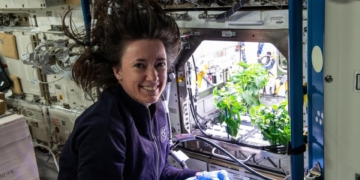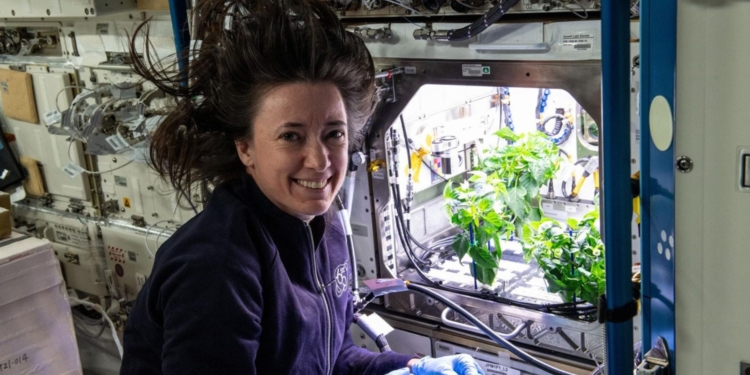When the chile season ended in New Mexico’s Hatch Valley, harvest continued 400 km above the ground on the International Space Station. At the end of October, the astronaut collected seven ripe peppers.
On social media, the American team together with their overseas counterparts celebrated the harvest and shared photos and videos of dark green fruits floating in microgravity, where people and objects appear weightless. They even threw a party with tacos flavored with the first crop of chili grown in space.
The seed journey began in the summer when 48 chili seeds boarded a spacecraft at Kennedy Space Center in Florida. After arriving at the International Space Station, they were put in an oven-sized grow room where LaChelle Spencer – the project’s science team leader – and her colleagues at the National Aeronautics and Space Administration (NASA) remotely controlled lighting, temperature and irrigation. For months, astronauts aboard trimmed plants, removed debris, and cultivated a miniature chili field.
The taco, prepared by astronauts on the ISS, consists of fajita beef, rehydrated tomatoes and artichokes, and freshly harvested chili peppers from New Mexico in November 2021.
The tacos, made by astronauts on the ISS, are made from fajita beef, rehydrated tomatoes and artichokes, and freshly picked chili peppers from New Mexico.
“It was a real treat for us,” NASA astronaut Megan MacArthur said during a press conference she gave in space. “We could come and smell the plant and see the chili grow. So it really was a good morale, as well as an interesting scientific project. “
The ongoing chili experiment, dubbed by NASA as the ISS launch, is part of a larger effort to explore the possibility of growing more fresh fruits and vegetables in space to supplement the food-based diet of astronauts. This experiment is one of the most challenging to date due to the long germination and growth times of Capsicum annuum, the Latin name for chili peppers.
Megan MacArthur, NASA astronaut and flight engineer for Expedition 65, removes debris from the habitat of the International Space Station, where Hatch Green chili is grown for an experiment with space crops. Chili peppers began to grow on July 12, 2021. This experiment is one of the longest and most complex plant experiments ever carried out aboard the orbiting laboratory.
Jacob Torres, a NASA technician and gardener in northern New Mexico, helped evaluate the cultivar used in the experiment. It is called NuMex Española Improved and is an early-maturing, medium-heat variety that is widely cultivated around Hatch, New Mexico.
During the testing phase, this pepper outclassed other rivals in its ability to adapt to the high levels of carbon dioxide and microgravity of outer space while maintaining the desired flavor and nutritional profile. “Not only was he a champion in New Mexico, but he also performed very well in our space cockpit qualifying tests,” Spencer said.
Torres is proud to have worked on this project. “Being part of this team and working on the new Mexican chili that we have grown really means everything to me,” he said in a video interview. And the space experiment exceeded his expectations.
“Our mission was to grow one pepper. One lucky pepper. And now we had seven pods from the first crop alone, ”added Torres.
There will be another harvest just after Thanksgiving (2021 November 21), Spencer said. Some of this new batch of peppers will be sent to Earth for nutritional and food safety analysis.
Spencer isn’t sure if microgravity will add a unique flavor to the signature pepper, but she thinks the experiment will advance the technology for growing chili under controlled indoor conditions that use significantly less water.
- Latest
- Trending































